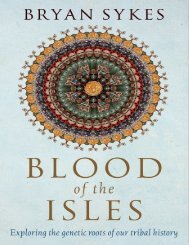Create successful ePaper yourself
Turn your PDF publications into a flip-book with our unique Google optimized e-Paper software.
THE QUENTA NOLDORINWA<br />
After the Sketch of the Mythology this text, which I will refer to as ‘the Quenta’, was the<br />
only complete and finished version of ‘The Silmarillion’ that my father achieved: a<br />
typescript that he made in (as seems certain) 1930. No preliminary drafts or outlines, if there<br />
were any, survive; but it is plain that for a good part of its length he had the Sketch before<br />
him. It is longer than the Sketch, and the ‘Silmarillion style’ has clearly appeared, but it<br />
remains a compression, a compendious account. In the sub-title it is said that it is ‘the brief<br />
history of the Noldoli or Gnomes’, drawn from the Book of Lost Tales which Eriol<br />
[Ælfwine] wrote. The long poems were of course now in being, substantial but massively<br />
unfinished, and my father was still working on The Lay of Leithian.<br />
In the Quenta there emerges the major transformation of the legend of Beren and Lúthien<br />
by the entry of the Noldorin prince, Felagund, son of Finrod. To explain how this could come<br />
about I will give here a passage from this text, but a note on names is needed. The leader of<br />
the Noldor in the great journey of the Elves from Cuiviénen, the Water of Awakening in the<br />
furthest East, was Finwë; his three sons were Fëanor, Fingolfin, and Finrod, who was the<br />
father of Felagund. (Later the names were changed: The third son of Finwë became Finarfin,<br />
and Finrod the name of his son; but Finrod was also Felagund. This name meant ‘Lord of<br />
Caves’ or ‘Cave-hewer’ in the language of the Dwarves, for he was the founder of<br />
Nargothrond. The sister of Finrod Felagund was Galadriel.)
















